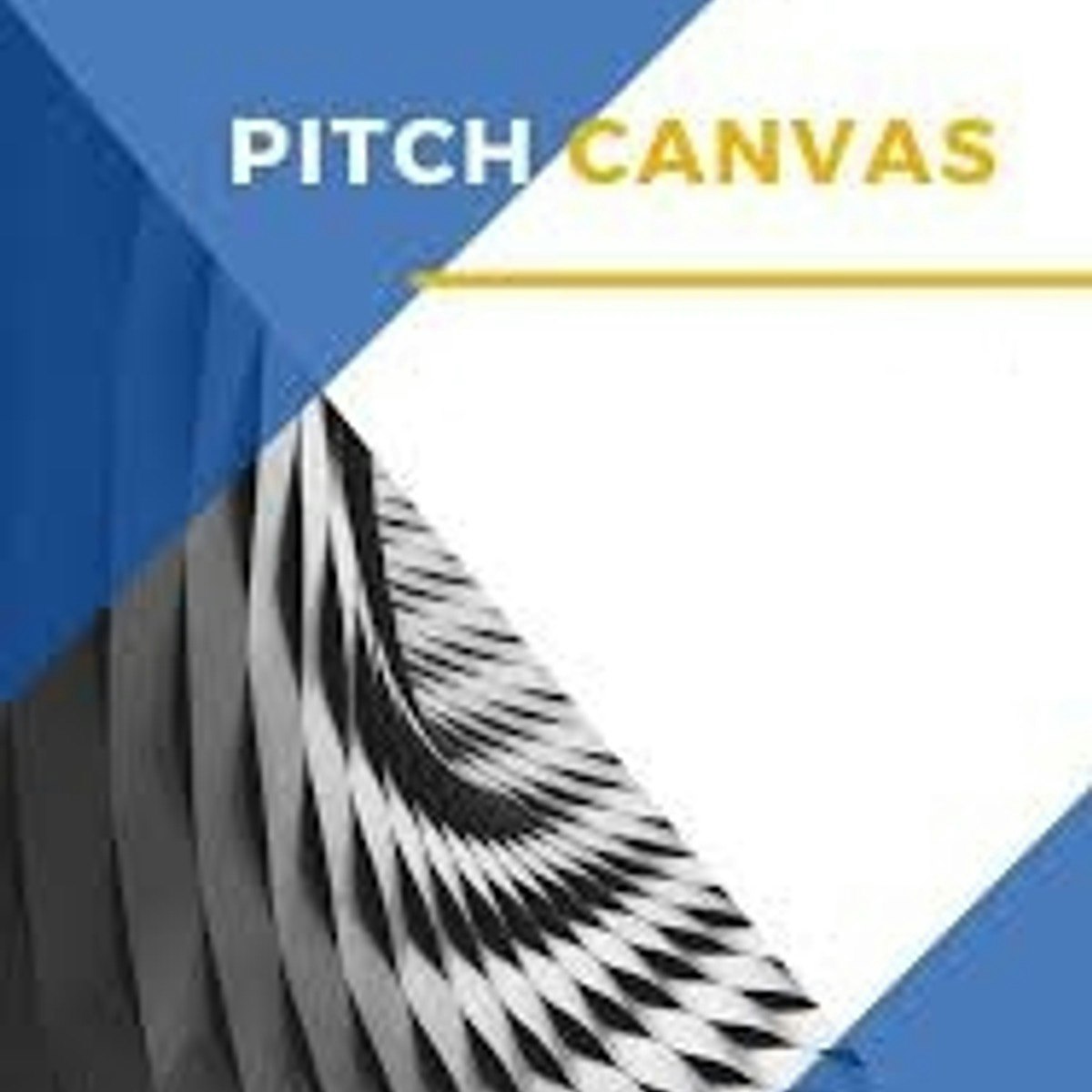Back to Courses









Business Courses - Page 64
Showing results 631-640 of 2058

Preparing to Secure Your Startup Funding with Pitch Canvas
By the end of this guided project, you will be able to use the Pitch Canvas to make adequate preparation for your startup funding pitch. The Pitch Canvas is an entrepreneurial brainstorming framework that help you to structure and visualize your pitch in one page. The canvas is most effective for pitch preparation that is not more than 10 minutes. The goal is to highlight the key factor of your business plan while leaving the details to the subsequent meeting that might require extensive pitch. The canvas helps you to focus on the important point by convincing the investors that your business is worth investing in, and also to prepare for questions they might likely asked.
For us to practically demonstrate the application of the Canvas for pitch preparation, we will use a Fintech startup company as a case study to conduct the analysis. Example of the case study would empower you with the skillset to apply the framework to your startup, or any other venture of your choice. The project is for entrepreneurs who want to secure funding for their startups. Also, for intrapreneurs and project managers who need to convince key stakeholder for funding a project or new venture. At the end of the project, you will be able to use the canvas to deliver a result-oriented pitch for your startup or project

Make the Sale: Build, Launch, and Manage E-commerce Stores
Make the Sale: Build, Launch, and Manage E-commerce Stores is the sixth of seven courses in the Google Digital Marketing & E-commerce Certificate. This course explores how businesses and individuals sell products online, including using popular platforms like Shopify. You’ll go through the process of creating a mock e-commerce store. To do this, you’ll build a Shopify store, add the necessary information, and create product listings. You’ll explore how to reach customers online through e-commerce customer outreach methods like advertisements and campaigns.
Google employees who currently work in the field will guide you, providing hands-on activities and examples that simulate common digital marketing and e-commerce tasks while showing you some of the best tools and resources used on the job.
Learners who complete the seven courses in this program will be ready to apply for entry-level jobs in digital marketing and e-commerce. No previous experience is necessary.
By the end of this course, you will be able to do the following:
- Understand essential e-commerce strategies and practices
- Explain how to conduct market research and product research
- Set up a mock e-commerce store using Shopify
- Use Google Ads to engage e-commerce customers
- Explain how trends and seasonality affect e-commerce businesses
- Use best practices to create an engaging customer experience online
- Describe the order fulfillment process through checkout, point of sale (POS), shipping, and delivery.
- Optimize a checkout flow for customers

Entrepreneurship Strategy: From Ideation to Exit
This course covers in the chronological order each defining step of an entrepreneurial project. It begins with very personal considerations related to getting to better know yourself better so as to decide if you are ready for the multiple challenges of entrepreneurship. It then deals with creativity in order to provide the right set of tools to find an idea with the right potential to disrupt an existing business. We then discuss how to gather a founding team, how to raise money to initiate the project, and how to deal with day to day cash management. Later in the course, we discuss the art of selling, focusing on business to business sales, and how to measure the product launch phase using cohort analysis. Later on, we discuss the challenges of HR in an entrepreneurial environment, and of recruiting at a point where nobody knows your company. We then describe very practical techniques to initiate the international development of a small company. Last, we cover the exit strategy topic.

Create Striking Real Estate Instagram Posts in Canva
In this 1-hour long project-based course, you will learn how to create visually striking real estate Instagram posts using Canva and you will also learn how to make these graphics appealing using different elements, fonts, text, color and animations to make these graphics more attractive.
The same skills can be used in creating visually striking posts in any industry like healthcare, business, food , corporate or for any other business.

Small Business Marketing Using LinkedIn
In this 1-hour long project-based course, you will learn how to use LinkedIn to promote your small business by creating a LinkedIn business page, connecting to the right customers, using the LinkedIn messaging feature, posting relevant content, joining groups, and creating your own group for your small business. This course will benefit small business owners with limited to no social media marketing experience.
Note: This course works best for learners who are based in the North America region. We’re currently working on providing the same experience in other regions.

The Impact of Technology
In this course, you will learn how to use theories and methods to make predictions of the potential impact of new technology – in general, as well as for a specific application. This will prepare you for the changes that we are facing in society, and also help you take advantage of transformations that are driven by technology.
The Impact of Technology course takes a broad approach, including social and economic factors. You will study historical examples and learn to recognize recurring patterns and cycles. The curriculum includes general innovation theories, foresight methodology, value chain disruption, and strategy.
The general process is as follows. First, you to learn how to draw a map of the potential future business landscape. After that, you get to identify interesting future business roles in emerging value networks. Finally, we find a path from where we are today to a desired end state. You will analyze how an industry or market may change if the technology which is available today is fully implemented in a 10 to 20-year perspective. In addition, you will identify barriers to such a development and make estimates regarding the timing.
The course includes a number of assignments to facilitate your learning – some of them compulsory. The largest assignment is about the introduction of self-driving cars (hence the course icon; source and credit to Google).
We all know that the future can’t be fully predicted in detail. However, the methods presented in this course will help you identify potential consequences. In this way, you will get a toolbox for decision-making in the areas of technology, investments, career path, research & development, or portfolio management.
Model Thinking
We live in a complex world with diverse people, firms, and governments whose behaviors aggregate to produce novel, unexpected phenomena. We see political uprisings, market crashes, and a never ending array of social trends. How do we make sense of it? Models. Evidence shows that people who think with models consistently outperform those who don't. And, moreover people who think with lots of models outperform people who use only one. Why do models make us better thinkers? Models help us to better organize information - to make sense of that fire hose or hairball of data (choose your metaphor) available on the Internet. Models improve our abilities to make accurate forecasts. They help us make better decisions and adopt more effective strategies. They even can improve our ability to design institutions and procedures. In this class, I present a starter kit of models: I start with models of tipping points. I move on to cover models explain the wisdom of crowds, models that show why some countries are rich and some are poor, and models that help unpack the strategic decisions of firm and politicians.
The models covered in this class provide a foundation for future social science classes, whether they be in economics, political science, business, or sociology. Mastering this material will give you a huge leg up in advanced courses. They also help you in life. Here's how the course will work. For each model, I present a short, easily digestible overview lecture. Then, I'll dig deeper. I'll go into the technical details of the model. Those technical lectures won't require calculus but be prepared for some algebra. For all the lectures, I'll offer some questions and we'll have quizzes and even a final exam. If you decide to do the deep dive, and take all the quizzes and the exam, you'll receive a Course Certificate. If you just decide to follow along for the introductory lectures to gain some exposure that's fine too. It's all free. And it's all here to help make you a better thinker!

Create a Financial Statement using Microsoft Excel
By the end of this project, you will be able to complete a financial statement with Microsoft Excel, composed of a transactions page, profit and loss statement, and balance sheet. You will learn how to enter your business transactions and interpret the data presented in the profit and loss statement. You will also learn about the components of a balance sheet and will have a better understanding of how a financial statement can be used to help track and present financial information for your company.

Business English: Management and Leadership
Are you a business executive or a manager who uses English in your career? Then you know that good business communication in English requires focus, vocabulary, and specific linguistic structures. In this course, you will follow along a recently promoted manager as she builds and leads her team to success. Together, you will practice the language and styles of communication needed in English for
• Recruiting and training a professional team to work together with integrity and respect
• Managing and participating in well-organized meetings
• Making telephone conferences more efficient
• Writing professional emails that are easy to read
The activities in this course will give you the opportunity to share your experience and receive immediate feedback from other business professionals around the world.

Designing the Future of Work
The workplace of tomorrow is an uncertain place. We live in a rapidly changing world, and design innovations such as artificial intelligence (AI), robotics, and big data are rapidly changing the fundamental nature of how we live and work. As these technologies continue to evolve at an exponential rate - it is becoming critical to understand their impact on contemporary work practices, and for businesses and employees to understand how to design a secure future amidst this disruption.
What new, disruptive technologies are on the horizon? How will jobs change? What challenges will employers and employees face? How can the design process help businesses and employees to create innovative solutions to overcome such challenges?
The course is a collaboration between UNSW Sydney Art & Design and AMP Amplify, AMP's innovation and ideas program. It brings together leading business and design thinking to help answer these questions, and investigates design strategies that businesses, employees and designers can adopt to find new opportunity in such a rapidly changing professional landscape.
WHAT WILL I LEARN?
The course provides you with a unique, authentic, and industry relevant learning opportunity. You will have access to current theory, industry examples and expert advice from leaders in the field. This course will help you to:
• Recognise how the integration of design approaches are shaping technology and business practices, and how these changes bring immense possibility and uncertainty to the future of work
• Analyse important skills and attributes that designers, employees, and businesses need to be successful in a speculative, technologically enhanced future
• Understand the importance of unique human attributes in increasingly automated workplaces
• Evaluate challenging issues related to potential change in processes, people and automation that might impact the future of your own employment or business
• Plot your own possible, probable, and preferable trajectories, and synthesise a design strategy to maximise your ability to adapt, grow, and realise opportunities in your own work future.
WHO WILL MY INSTRUCTORS BE?
You will learn effective design thinking strategies from leading UNSW Australia Art & Design academics. You will also examine case studies from business and service design perspectives that demonstrate how design can transform business processes to become more adaptive to and predictive of technological and social change, and this can help to capitalise on new opportunities. Direct from our industry partner AMP’s innovative Amplify program, you’ll hear personal insights and advice about how to develop attributes and skills that will give you an advantage in the workplace of the future, from the following business leaders, futurists, entrepreneurs, and innovators from around the world:
• Sean Brennan, Head of Design & Innovation, AMP
• Megan Dalla-Camina, Co-Founder/CEO, Lead Like a Woman - via Amplify
• Susan David Ph.D, CEO, Evidence Based Psychology - via Amplify
• Dr. Norman Lewis, Director, Futures-Diagnosis Ltd - via Amplify
• Heather McGowan, Author & Advisor, Work to Learn - via Amplify
• Ramez Naam, Exponential technologies, Machine learning, Artificial intelligence, Singularity University - via Amplify
• Dr. Andy Polaine, Regional Design Director, Asia-Pacific, Fjord
• Michael Schrage, Research Fellow, Innovation Thought Leader, MIT Sloan School's Center for Digital Business - via Amplify
• Chris Shipley, Curator, MIT Solve. via Amplify
• Sue Suckling, New Zealand Qualifications Authority, Chair of Callaghan Innovation, Chair of the New Zealand Qualifications Authority - via Amplify
• Professor Nick Wailes, Director, AGSM, and Deputy Dean, UNSW Business School. UNSW Sydney.
Popular Internships and Jobs by Categories
Browse
© 2024 BoostGrad | All rights reserved


